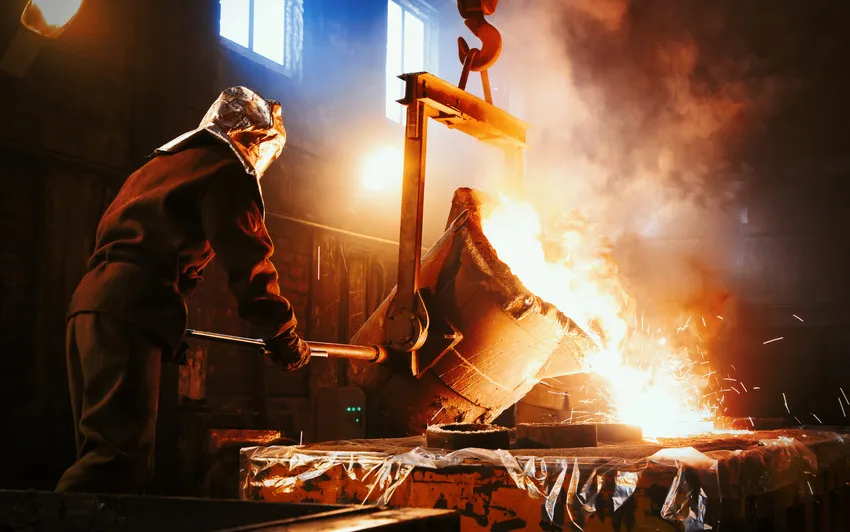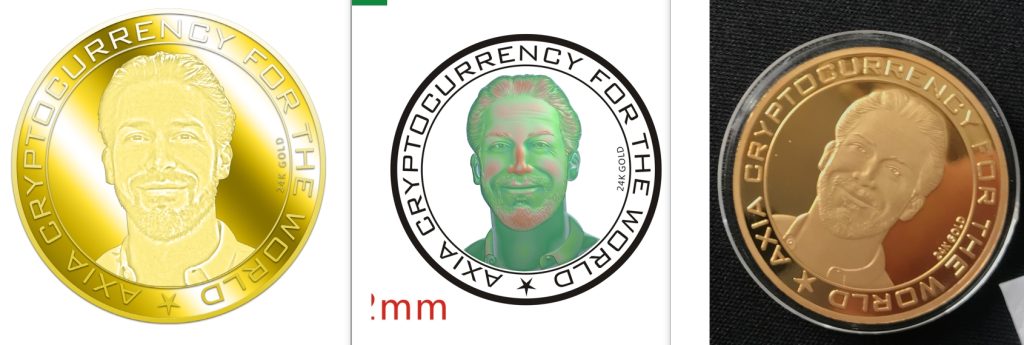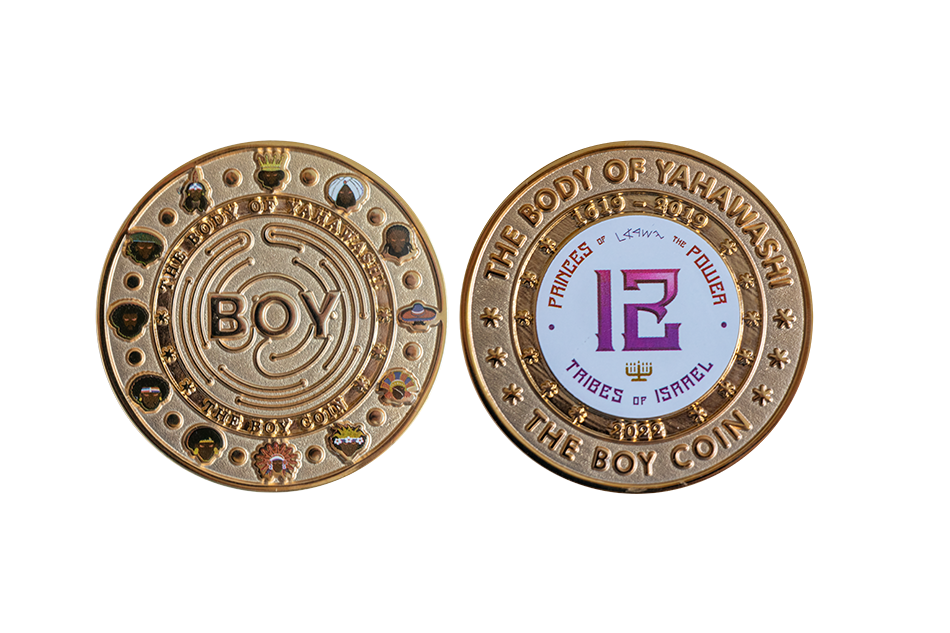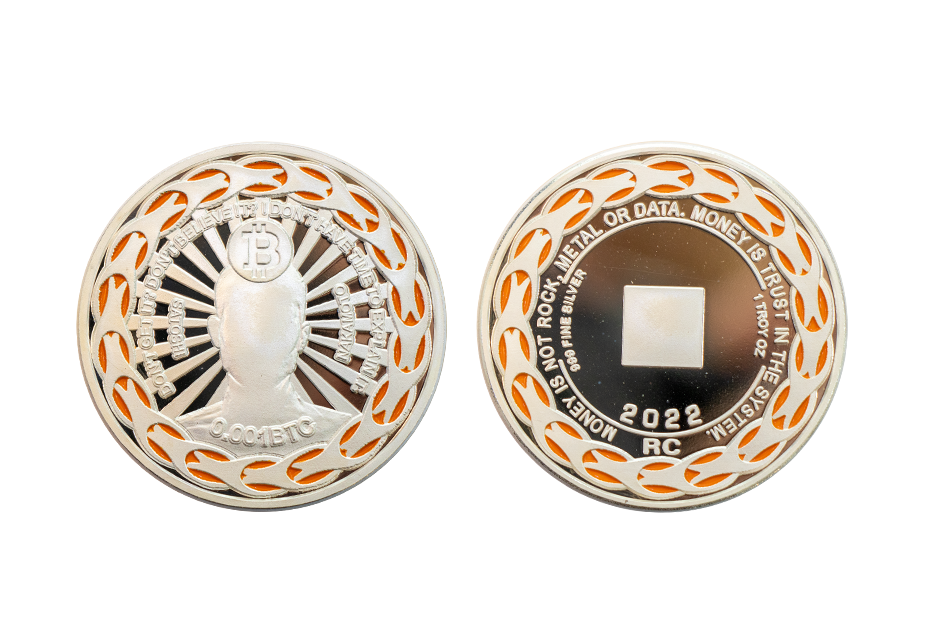What It Takes to Make Custom-Minted Coins

The process of making custom-minted coins is complex and requires a great deal of skill and minutious labour. That said, crafting coins with a customer’s individual design is an extremely exciting and highly creative endeavour for a coin manufacturer.
The following material will give you a vivid insight into the manufacturig process of commemorative coins. CoinsForAnything invites you to embark on a journey that will make you an expert on how custom-minted coins are produced. Learn answers to questions such as how we apply a customer’s personal design to precious metal rounds, how long it takes to craft coins and medals, and many others.
The Technology Involved When Manufacturing Custom-Minted Coins
Modern minting techniques are characterised by a high level of mechanical precision, leading to aesthetic perfection. The procedure of custom-minting coins involves a logical sequence of clearly defined steps. They start with the elaboration of the commemorative coins’ design. Indeed, it all begins with the idea of the appearance of future custom-minted coins. At CoinsForAnything, a team of talented coin designers turns a suggested image of a client into a personalised, harmonious pattern. Later, we put it on the custom-minted coins. Before the design stage is finalised, the presented digital artwork undergoes a series of revisions before being handed over to a coin manufacturer. Using computer-aided design (CAD) software, the handyman turns the approved pattern into a technical graphic.

What Happens Next?
Once a customer is happy with both graphics, the sculptor carefully prepares a plasticine model of the bas-relief according to the approved design. Typically, it is three to twelve times the size of the finished custom-minted coins. This preparatory step for the production of the coin die, also called a mould, is painstaking work that can take up to three weeks. During this time, the coin manufacturer must be mindful of the depth of relief suitable for these exact custom-minted coins.
The pattern of the plasticine model is then transferred to a rubber resin mould. We subsequently use this to make an epoxy resin mould for your custom-minted coins’ production. A specialist places this epoxy piece on a reduction machine called a pantograph. It applies the exact contour of the mould to what we call a master die. It has the same diameter as the custom-minted coins to be made.
Based on this master die, a coin manufacturer produces a set of working stamps for the actual production of custom-minted coins. The punch reduction process goes through several cycles before the stainless steel moulds are formed from the master die.
Commemorative Coins: Automation Side of Producing Your Medals
Any automated manufacturing process begins with machines being programmed to do their job accurately. When creating a mould to craft custom-minted coins, we need to mill cut the design into stainless steel. This is where automation meets manual artwork in the coinage industry. Once the mould has been created, our experts test it to ensure that the fully personalised design will appear on the custom-minted coins as intended with all coin dies equally.
Custom-Minted Coins: Magic of Pressure
Before the moulds can be used in any serious way, they must be hardened. This applies also to die-cast coins, for which melted metal is poured into a mould and allowed to cool. However, when minting custom coins, the moulds are mounted on the minting machines according to the required denomination of the custom-minted coins. Once all the preparation work is done, it is time to use the coin blanks. These blanks were previously cut out of a metal sheet such as they have the correct size. Now they are fed into the minting machine’s feed hopper. When striking these blanks, all elements are subjected to hundreds of tons of pressure.

Depending on the size of a custom-minted coin run, our technicians make the machines repeat this stamping process over and over again. To fix the individual design into the chosen metal for the commemorative coins, a coin manufacturer uses the appropriate die for each side. Each coin blank is usually minted at a pressure of 300 tonnes!
Plating, Finishes, and Enamel Colours for Custom-Minted Coins
While the final pattern is in place right after being embossed, most custom-minted coins aren’t fully completed yet. Since a number of them haven’t been designed to exist in their core material, the plating process is the next important step coin manufacturers undertake. Whether the commemorative coins are coated with precious metals or ordinary metals through electro-plating, the step must be completed before enamel colours or other elements are added to the custom-minted coins.



Plating is primarily a chemical process that uses electrical current to coat custom-minted coins with another metal’s salts that were added to a transmitting solution. Regardless of the base metal used, custom-minted coins with plating have the appearance of the metal they are plated with.
For a more rustic look, we are always happy to give your custom-minted coins an antique finish instead of our premium polished plate, that alternates polished and matte elements. Especially when producing replicas of historic coins, the new pieces look authentic when antiqued. It is also popular for challenge coins. For a more sophisticated look, we offer to sandblast elements of the coin design, or make them entirely polished or matte. As a final touch, our artists can apply soft or hard enamel to colourfully highlight specific details on your custom-minted coins.
The desired shade, obtained by mixing the right tints, is created by a highly qualified colour expert. Next, the enamel paint is added to the batch of custom-minted coins with the highest possible precision. To ensure timely curing of the colour, we heat up the coins again.
Custom-Minted Coins: An Eye for Detail
Laser engraving of unique inscriptions or serial numbers is the final stage of the custom-minted coins’ creation process. Then, before being shipped, all our custom-minted coins undergo a strict quality control process. This guarantees that they exactly match the production graphic that a customer has approved previously. Specialised personnel checks each of the custom-minted coins to confirm the machine didn’t make any mistakes. Furthermore, if there are any, our specialists fix any imperfections by hand.
Are you Intrigued by the Idea of Getting Your Own Custom Coins Made from Precious Metals?
Use our Online Coin Configurator to craft the first sketch of your custom-minted coins’ design. Let our professional coin designers complete your artwork and have our coin manufacturers bring your ideas to life!
Disclaimer: Our products on this page are known as “Coins” in order to comply with general linguistic usage. It should be expressly pointed out that it concerns, however, individually embossed medals and no current or former means of payment/currency.
